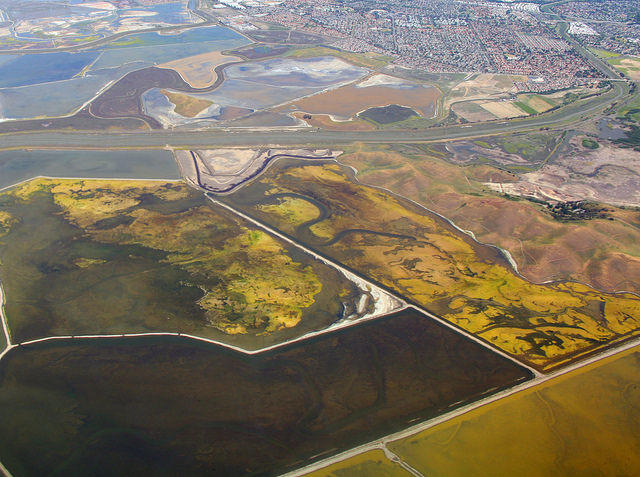Latest News and Updates from Audubon in California
California Condor. Photo: Scott Frier/USFWS

The U.S. Fish & Wildlife Service today announced that the Tricolored Blackbird is one of several species that it will formally consider for protection under the Endangered Species Act. Surveys last year indicate that the number of nearly-endemic species have dropped as much as 44 percent since 2011. The announcement from the Service begins a 60-day comment period, which will be followed by more in-depth consideration of the petition.
The Center for Biological Diversity filed the petition to list the Tricolored Blackbird in February.
The decision to move the federal listing process forward tracks with a similar move at the state level. In June, the California Fish and Game Commission voted against advancing a petition to list the Tricolored Blackbird under the California Endangered Species Act. That petition was also filed by the Center for Biological Diversity, and Audubon California supported it in writing, through public testimony, and through its network of supporters.
Following the Fish and Game Commission decision, both the Center for Biological Diversity and Audubon California called for reconsideration, due to a number of issues with the process through which the body made its decision. The Center for Biological Diversity subsequently refiled its petition.
For the last several years, Audubon California has worked aggressively to protect Tricolored Blackbird nesting colonies in the Central Valley. In January, at the urging of Audubon California and other partners, the Natural Resources Conservation Service issued a $1.1 million grant to support a partnership including Audubon California, the dairy industry, and federal agencies to support Tricolored Blackbird conservation.

The Black Oystercatcher is one of our favorite shoreline birds, with its black body and bright orange beak. The bird has long been a focus for conservation, and its recent designation as climate endangered in Audubon research has heightened concern. But as a recent Bay Nature article shows, the story of the Black Oystercatcher isn't as gloomy as one might think. We're learning a great deal about the bird, thanks to a massive effort from volunteers up and down the coast, and what we're learning gives us hope.
As Audubon California Marine Program Director Anna Weinstein says in the article, "“They have a chance. These birds are tough, they’re survivors that chase away predators such as ravens and red-tailed hawks, and I have a sense that they will prevail and adapt to climate change. They are a bird for today’s world.”

Much like our own Sonoma Creek Marsh restoration project, our colleagues at Santa Clara Audubon Society are bringing back a formerly troubled area of San Francisco Bay. They are one of several groups involved with the South Bay Salt Pond Restoration Project, the largest tidal wetland restoration project on the West Coast. The restoration is converting 15,100 acres of commercial salt ponds at the South end of San Francisco Bay to a mix of tidal marsh, mudflat and other wetland habitats. The San Jose Mercury News reports that a focal species has already arrived on the restoration site:
"We're ecstatic. It's a milestone," said biologist Rachel Tertes of the U.S. Fish and Wildlife Service, who on Sunday led a small private tour along the dusty levee of the pond, which is closed to the public.
"It happened so quickly," said Tertes, a member of the team at Don Edwards San Francisco Bay National Wildlife Refuge that found both species only nine years after excavators breached the walls of the toxic pond, allowing natural tidal flows to resume.
The morning sun was just rising over the bay last July when Tertes and a team of wildlife surveyors were suddenly startled by the clattering sound of a pair of Clapper, now called Ridgway's, Rails.
"It was a duet. Male and female, dueling clatters," said Tertes. "It blew everyone's mind."
Read the rest of the article by clicking here.
To read more about the project, click here.
Our newsletter is fun way to get our latest stories and important conservation updates from across the state.
Help secure the future for birds at risk from climate change, habitat loss and other threats. Your support will power our science, education, advocacy and on-the-ground conservation efforts.
Join the thousands of Californians that support the proposed Chuckwalla National Monument.